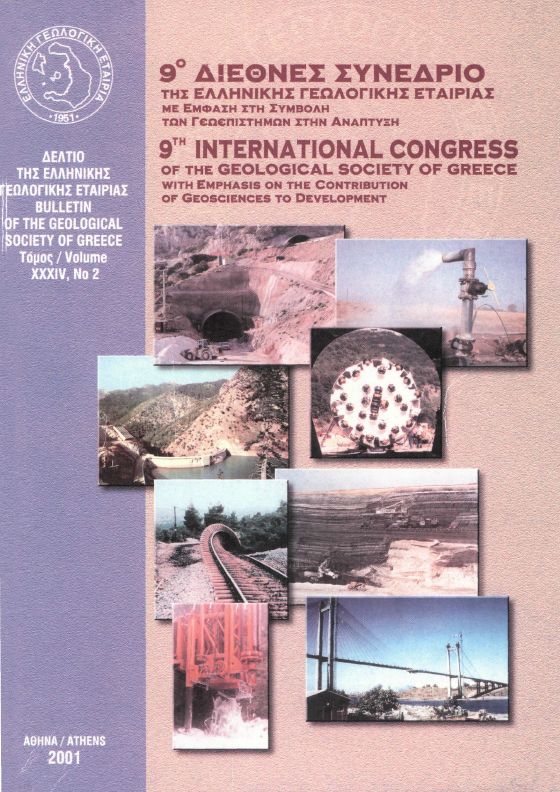A DEBATE ON THE SIMILARITY OF PARTICLE SIZING RESULTS DERIVED FROM THE ANALYSIS OF FINEGRAINED SEDIMENTS BY TWO DIFFERENT INSTRUMENTATIONS

Abstract
A set of grab-sample sediments collected from the basin floor of the Corinth Gulf, Greece, was analysed using two different techniques; LS 230 laser system and Coulter Counter TA II. The present study presents the results derived from the comparison between the two techniques. The correlation between the mean size and the sorting values obtained from the two methods is moderate. Also moderate are the correlations estimated for the fractions of clay and silt obtained from the two methods Furthermore the analysis showed that the Laser Coulter determines coarser grain sizes than the Coulter. The analysis of variation/residuals within individual size intervals showed a higher variability of residuals for the coarser fractions (7-6 and 5-4 phi).
Article Details
- How to Cite
-
Iatrou, M., Papatheodorou, G., Piper, D. J., Tripsanas, E., & Ferentinos, G. (2007). A DEBATE ON THE SIMILARITY OF PARTICLE SIZING RESULTS DERIVED FROM THE ANALYSIS OF FINEGRAINED SEDIMENTS BY TWO DIFFERENT INSTRUMENTATIONS. Bulletin of the Geological Society of Greece, 40(1), 64–75. https://doi.org/10.12681/bgsg.16336
- Section
- Palaeontology, Stratigraphy and Sedimentology

This work is licensed under a Creative Commons Attribution-NonCommercial 4.0 International License.
Authors who publish with this journal agree to the following terms:
Authors retain copyright and grant the journal right of first publication with the work simultaneously licensed under a Creative Commons Attribution Non-Commercial License that allows others to share the work with an acknowledgement of the work's authorship and initial publication in this journal.
Authors are able to enter into separate, additional contractual arrangements for the non-exclusive distribution of the journal's published version of the work (e.g. post it to an institutional repository or publish it in a book), with an acknowledgement of its initial publication in this journal. Authors are permitted and encouraged to post their work online (preferably in institutional repositories or on their website) prior to and during the submission process, as it can lead to productive exchanges, as well as earlier and greater citation of published work.







